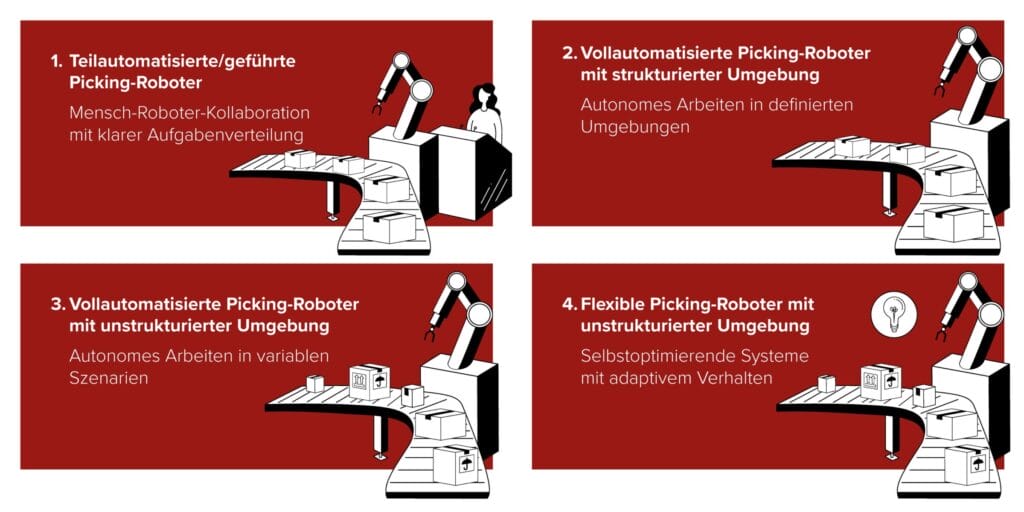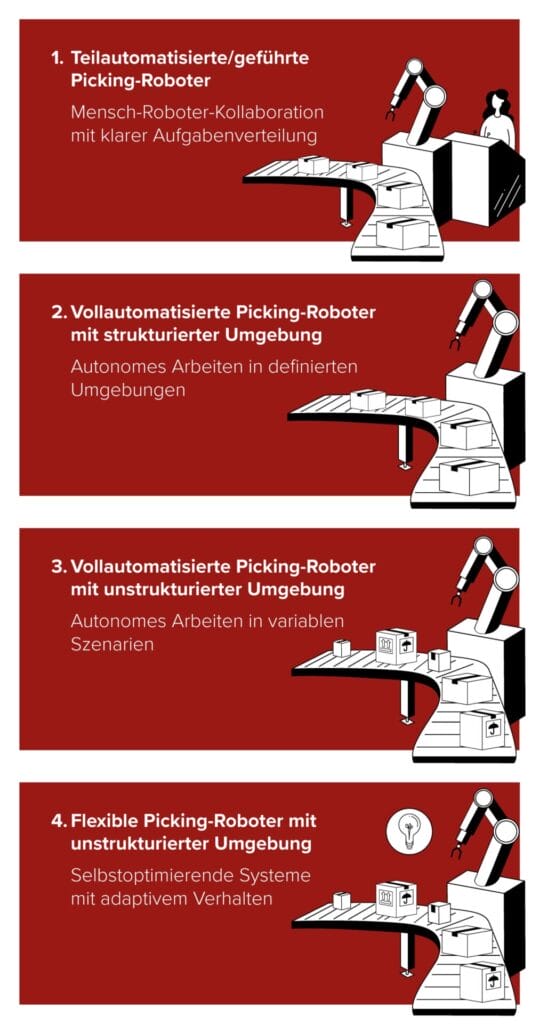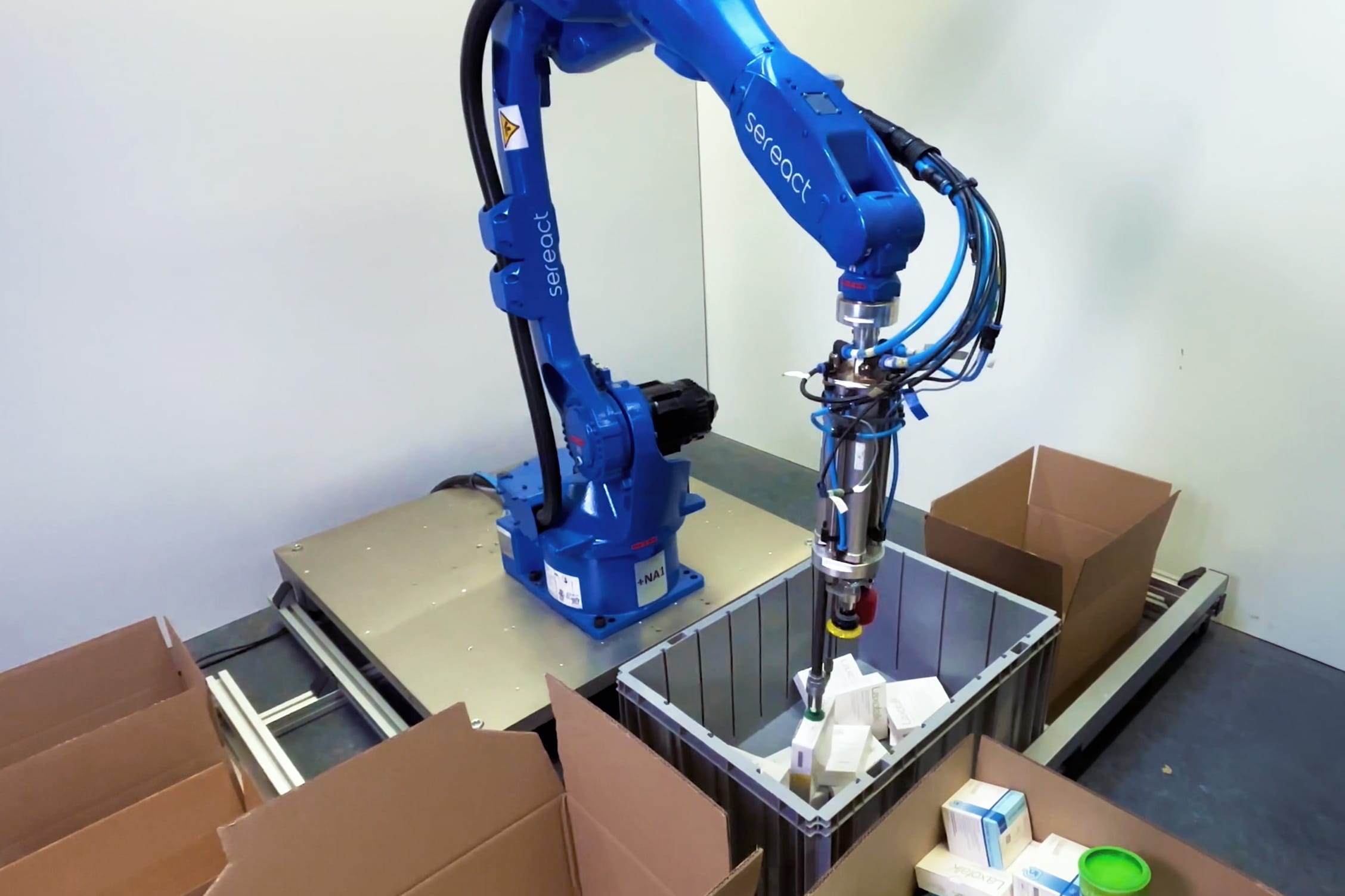Robot picking: how intelligent systems are transforming intralogistics
In the warehouse of the future, humans and robots will work side by side. Autonomous vehicles navigate independently through the aisles, while AI systems optimise picking orders — without any human intervention. But how far away are we really from this?
We are actually already there. As industrial planners, we are constantly dealing with far-reaching technological revolutions in intralogistics. The constant market pressure for greater speed, precision, efficiency and flexibility makes automation a strategic necessity for our customers. The fusion of hardware and intelligent software is redefining the rules of the game in the field of robotic order picking.
Let’s first take a look at the stages of robot-assisted order picking.

Automation levels for the use of picking robots


Practical example: Automated robot picking at Dr. Falk Pharma GmbH
At SOLTIC, we are currently working on the automation of the order picking process at Dr Falk Pharma GmbH. The company specialises in digestive and metabolic medicine. As a family-owned company with a global network, Dr Falk Pharma GmbH focuses on the development and distribution of innovative medicines.
SOLTIC is working with Dr Falk Pharma GmbH to investigate the use of automated picking robots as part of a project for efficient group logistics. The focus is on testing the feasibility of automated robot picking at the compact container warehouse (AutoStore). The objectives of the study, which is being conducted in cooperation with a potential supplier, are
- Clarification of the technical feasibility of the robot solution, taking into account the product range of Dr Falk Pharma GmbH
- Detailed analysis of the impact on upstream and downstream processes (such as packing and shipping processes)
- Final evaluation of the resulting business case
Get an impression of the project in the following video.

Picking robots: an overview of the technology behind them
Robotic picking is far more than just a robotic arm. It is a complex system based on the interaction of several technologies:
Artificial intelligence (AI) & machine learning (ML)
- Object recognition
AI-supported algorithms enable the robots to identify items of different shapes, sizes, textures and positions (bin-picking) in the storage container. A pre-trained deep learning algorithm identifies optimum gripping points for any item. - Gripping point determination
ML continuously optimises the picking strategy to prevent damage and ensure a high pick rate, even with varying product ranges.
Vision systems (image processing)
- 3D cameras and sensors
High-resolution 3D image processing systems record the exact position and orientation of the items in the room in order to control the movements of the robot arm with millimetre precision.
Gripper technology
- Multifunctional grippers
Flexible grippers are used that can adapt to different product types, such as vacuum grippers (for flat surfaces), finger grippers or adaptive gripping systems that can also change their gripping system automatically depending on the product.
Conclusion
The scenario described at the beginning is no longer a distant vision. Many of these technologies are already being used successfully in everyday industrial applications. The boundaries between man, machine and digital intelligence are becoming increasingly blurred. Modern intralogistics systems are no longer reactive, but proactive, adaptive and networked. For companies, this means that the future of logistics is not tomorrow, but today — in every facility that relies on flexible automation, adaptive systems and seamless integration.
With SOLTIC, your intralogistics of the future becomes a reality
We see your order picking as a place where technology and human expertise are not in competition, but rather reinforce each other. The result is a new quality of productivity, transparency and flexibility — and a decisive building block for the industrial value creation of tomorrow.
Would you like to shape the future with us?

We look forward to hearing from you.
Bastian Wenz
Senior Project Manager, Expert